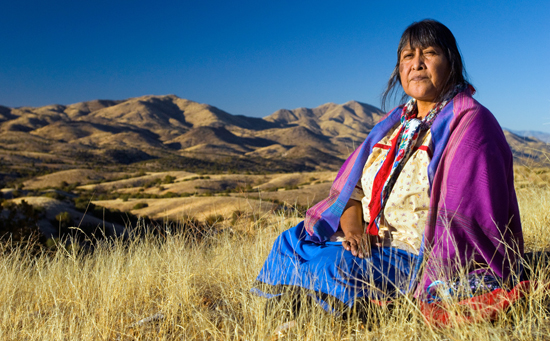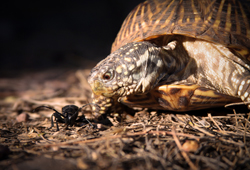Lens on the Land: Environmental Photography of the Santa Rita Mountain Range
The beautiful Santa Rita Mountain Range in Southern Arizona is a tranquil and serene stretch of land that harbors a diversity of rare animals, plant species, water resources and communities that have inhabited the area for generations. Currently, the area is facing a threat in the form of a proposed copper mine that would cost $1.23 billion to dig the mile wide and a half mile deep area that will likely jeopardize the ecosystem and all of its regional inhabitants.
To help combat this, photographer Josh Schachter and Brian Forbes Powell teamed up with the Sonoran Institute and Save the Scenic Santa Ritas to compile a collection of stunning photographs of the region from 30 photographers of the area to be presented at the exhibit, Lens on the Land: Rosemont, What’s at Stake. Over the past two years, Schachter and Forbes Powell have narrowed over 500 photographs down to 50 for this special showcase to raise awareness of the need to save the area and its endangered species.
“Two years ago we went out there and started photographing and decided that we had to use art to help people understand how important the ecological resources are in that region,” says Schachter. “We decided that it would be more effective to partner with the organizations that were already working to protect that land of the Santa Ritas and surrounding areas. So we contacted them and then put a call out to photographers in the region and compiled hundreds of photographs. For me, it’s also exciting to have all of these artists come together and use their talents to explore and represent this landscape.”
If the mine is allowed to proceed, it would operate for at least 20 to 25 years and could jeopardize nine endangered species, Southern Arizona’s $2.4 billion dollar tourism industry, the availability and quality of water for the area; it would darken the skies for the thriving astronomy industry, damage many cultural sites that reflect thousands of years of Native American habitation and could harm the rural economies including vineyards, pecan orchards and ranching.
“Throughout history, art has played a role on shaping our understanding of landscapes. Stories and visual stories can help solidify our community’s view of issues and policy maker’s perspective on these issues,” says Schachter. “Around the Rosemont [Copper potential mining] area and the water sheds and the Santa Ritas so many of the resources and species are so hard to see in passing, so photographs that illuminate them, like a jaguar in snow for example or rare flowering orchids, are amazing resources.”
The exhibit is showing at Fluxx Studio & Gallery, 414 E. Ninth St., and opens with a reception on Saturday, Feb. 1 at 6 p.m. The opening event and exhibit is free to the public and runs until Feb. 26 on Thursdays and Fridays from 3 p.m-6 p.m. and Saturdays and Sundays from noon to 7 p.m. There is also a screening of “Rosemont Ours” a NEW ARTiculations Dance Theatre video production that takes place on Feb. 16 at 7 p.m. as a complement to the exhibit. The gallery will also feature dance, video, painting, poetry, audio interview and music that to help support the conservation of Rosemont.
“It’s very exciting because a collection of photographs such as these of this region haven’t been assembled like this before,” says Schachter. “It’s really an exciting celebration because it is such a unique region that has so many wonders that are rarely seen. Over all of the years of working on conservation issues, I’ve developed a deep passion for telling stories of species, people and land through art. It has allowed me to develop a vocabulary to be an photographer, as much of my own photography is focused on the designs of nature and without that I wouldn’t be an artist.”

Ofelia Uya Rivas, an advocate for the cultural and ecological heritage of her people and land for many years, sits by the proposed mine site after performing what she describes as “a ceremonial offering to the land and ancient ancestors in recognition of the sacredness of the significant O’odham legacy of survival since millennia.” Behind Ofelia rest dozens of significant prehistoric sites, including an ancestral ball court site, traditionally used for games and ceremonies. Most of these sites, including much of the area shown in this photograph, would be buried under hundreds of feet of mine waste.
photo: Josh Schachter
For more information, and to RSVP for the opening, visit LensOnTheLand.com.
Category: Arts, Community, DOWNTOWN / UNIVERSITY / 4TH AVE, Events, Nature, PHOTOS






